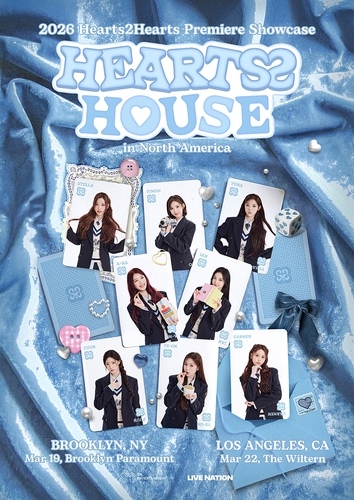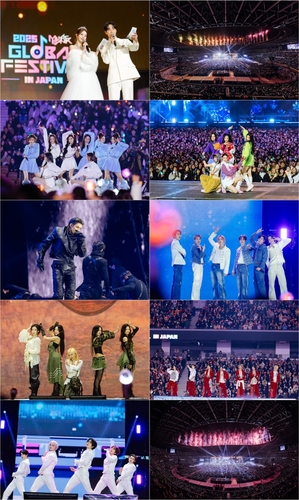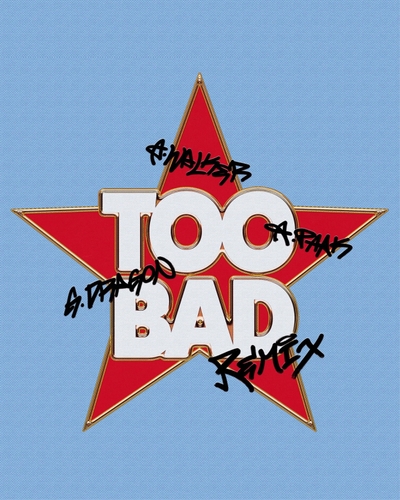Forever 17: Teen dreams on steroids in K-pop Neverland

Have you ever noticed a pattern in recent K-pop rookie releases?
In case the steady stream of images of fresh-faced idols either laughing, running, bonding or all of the above — possibly beneath an open blue sky — somehow slipped under your radar, "youth” or “youthful” has become arguably one of the most overused marketing terms in the K-pop lexicon as of late.
To be more specific, the buzzword of the moment is the Korean term cheongnyang, loosely translated as a sense of refreshing youthfulness.
Of course, this is nothing new, especially for debutants; adolescence has long been the industry’s favored currency, after all, with the youngest idols sometimes only 13 to 14 years old.
Perhaps it’s only natural for up-and-rising rookies — such as TWS, NCT Wish, BoyNextDoor, ZeroBaseOne, Younite, KickFlip, Tempest, Meovv, HITGS and many more — to have some variation of so-called “refreshing,” youth-y elements at the forefront of their aesthetics or marketing schemes.

But there might be more at play behind K-pop’s latest obsession with glossy imagery of teenage days.
While youthfulness has always been a constant presence as a concept within the industry for ages, the word cheongnyang has become nearly omnipresent across album descriptions and news headlines nowadays — whether it be "neo-cheongnyang" by NCT Wish, "mysterious cheongnyang" by ZeroBaseOne, the "hip cheongnyang" of Younite or "classic cheongnyang" of TWS — overshadowing almost every other adjective with even a remotely teenager-ish vibe.

Has the concept been reinvented for a new era, or is it simply a resurfacing of the timeless success formula?
Or, maybe we should go back to the beginning: What exactly does youth really mean in today's K-pop culture?
‘So fresh, so clean’: Capitalizing nostalgia
It might come as a surprise how culturally specific K-pop’s youth-centered concepts are to Korean society.
The original Korean word cheongnyang does not carry any age-specific meaning on its own. By definition, it describes something clear and cool, like a crisp autumn sky or crystal clear sea under sunlight — which is why the term cheongnyang drink even means soft drink in Korea.
But the K-pop version of the word has taken a broader, more symbolic meaning. It often goes hand-in-hand with another Korean term that rhymes nicely: cheongchun, which means “blue spring” in a literal sense, referring to the period of life between late teens and twenties.
It would be easy for those well-acquainted with the K-pop scene to immediately think of a girl group that can be singled out as the queens of cheongnyang: NewJeans.

"The success of NewJeans has had a significant impact on the recent trend," said pop culture critic Kim Young-dae.
"The group has had a lot of influence that goes beyond the cheongnyang theme, in terms of overall easy-listening music style and an intuitive style that focuses on fashion and aesthetics instead of world-building or [abstract] concepts."
The scene in NewJeans's debut music video "Attention" (2022) — where its five members, with their natural, long black hair, dance and sing on green grass beneath a blue sky — has, in a way, reinvented cheongnyang, or brought it back into fashion with a fresh twist.
In its 2023 hit track "New Jeans," the quintet defined the very idea of cheongnyang through the words of its music: “Listen to this, New Jeans / So fresh, so clean.”
If you haven't heard the group's songs yet, imagine sipping a fizzy drink — or a cheongnyang drink — on a sunny summer day; it evokes the feeling of taking a deep breath of fresh air, inherently tied to the idea of carefree young generations yet to be saddled with adult responsibilities.
NewJeans even went further with its visual elements with what everyone knows and is therefore nostalgic for: school uniforms.


There's nothing new with the schoolgirl concept, sure, but what is noteworthy in today’s youth-centered motifs is that they tend to be more narrative-driven, meaning that they try to not only aestheticize adolescence but also create a story that evokes nostalgic feelings.
"The traditional cheongnyang concept has been more of a polished image crafted by adults," noted culture critic Kim Do-heon. "But the recent interpretation, as seen in teams like TWS, draws its strength from narratives centered on growth, coming of age and such."
The nostalgic aesthetic, to some extent, "satisfies a compensatory desire in those who didn't get to enjoy a carefree youth," Kim added.


What's 'so fresh'?
Whether this kind of specific youth-inspired motifs has actually become more prevalent in recent K-pop releases is a somewhat divisive question among industry insiders and critics.
Some argue that, yes, these themes certainly became more common over the couple of years, while others point out that it is more overused marketing jargon than a genuine creative shift.
Kim Young-dae acknowledged that "it is true that the cheongnyang concept has become a trend over the past few years."


But the latest trend isn't fundamentally different from the cheongnyang that has long existed, he noted, adding that such themes tend to come and go in repeated cycles.
On the other hand, some argue that the cheongnyang concept should be defined more narrowly, distinct from the overused marketing term that’s been doing quite a heavy lifting.
"NCT Wish's aesthetics are defined as cheongnyang, but its trajectory so far has been almost identical to that of NCT Dream's in its early days," said Kim Do-heon.
"We didn't really say NCT Dream was themed cheongnyang — they were just young."


Boys with ‘harmless’ charms
Another factor driving the cheongnyang surge is the rise of rookie boy bands that debuted between 2023 and 2024 — following a period dominated by girl groups such as aespa, IVE, NewJeans and Le Sserafim — and have been picking up momentum since last year.
"These rising boy bands have to compete with established acts like BTS and other big names," said an industry source who spoke on condition of anonymity.
"K-pop groups' average life span in general has become much longer than past, meaning that rookie groups need to find unique angles to set themselves apart from older, bigger groups."

An increasing preference among female fans for "harmlessness" in men is cited as another possible driver, while the gradual dissolution of the traditional, rigid gender norms has allowed both boy and girl groups to expand beyond conventional boundaries as well.
"Boy bands lately tend to lean into a harmless, 'boy-next-door' image rather than a macho-like, hyper-masculine aesthetics," said Kim Young-dae.
"There have been several high-profile cases where members of boy groups were embroiled in controversies due to their private lives. Coupled with the longstanding popularity of hip-hop-inspired idol groups and the increasingly complex fantasy world building, the general public appears to have grown weary of such approaches."

Controversies involving former boy band members have made constant headlines over the last decade, with greater frequency and impact than those involving girl groups — NCT's Taeil or Seungri from Big Bang being two of the most prominent and recent examples. Taeil was indicted by prosecutors for quasi-rape in March, and Seungri completed his one-and-a-half-year prison sentence in 2023 for soliciting prostitution, gambling and embezzlement.
Selling a dream, with a dose of K-reality
At its core, the trendy cheongnyang concept romanticizes a version of youth that may never have truly existed.
It is by design easy to digest and consume, offering a harmless escapism, moving away from pushing boundaries or bold provocations.

Yet, like many fantasies, the idea of cheongnyang is deeply rooted in reality — which means that it is crucial to understand the broader societal context in which it was born in order to fully grasp what the concept represents in the world of K-pop.
"Take One Direction or New Kids On The Block — those boy bands also had huge success built on a sense of innocent youthfulness," noted Kim Do-heon.
Still, while the essence of the youth-inspired concept is shared among boy bands, its construction inevitably reflects its cultural and social backdrop, Kim suggested.
"Cheongnyang is, therefore, inherently Korean in a sense — so for a global audience, it offers a representation of Korean society, and stands as a unique subculture that needs to be understood in the context of the country's broader societal construction."
BY SHIN HA-NEE [shin.hanee@joongang.co.kr]




